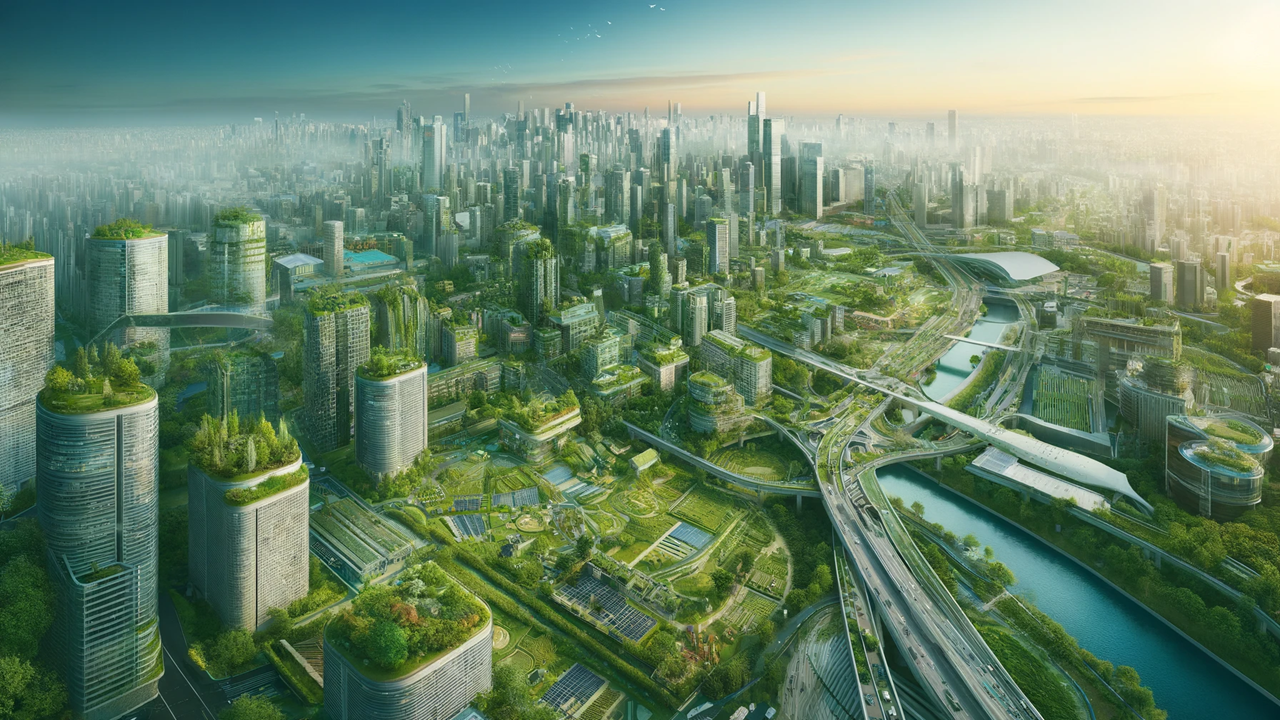Green Metropolises: Navigating the Path to Sustainable Urban Growth Globally
This article delves into the critical strategies and practices necessary for achieving sustainable urban growth globally. It underscores the importance of integrating technology, strategic planning, environmental sustainability, and socioeconomic inclusivity to create resilient, thriving urban environments that cater to the needs of their growing populations without compromising the planet's health.

In today's world, urban centers are not just growing; they are burgeoning at an unprecedented rate. This explosive growth presents unique challenges and opportunities for sustainable development. "Green Metropolises: Navigating the Path to Sustainable Urban Growth Globally" explores the multifaceted strategies necessary to ensure that cities expand in ways that are environmentally sustainable, economically viable, and socially inclusive.
Urban Expansion and Its Impacts
As more of the world's population shifts into urban areas, the strain on infrastructure, resources, and the environment intensifies. Cities use more than two-thirds of the world's energy and are responsible for over 70% of CO2 emissions. This makes sustainable urban development not just beneficial but imperative for global health and well-being.
Strategic Urban Planning
Central to achieving sustainable urban growth is strategic urban planning. This involves the integration of land use planning with policy initiatives that encourage sustainable transport, housing, and energy usage. Cities like Copenhagen and Singapore serve as benchmarks with their commitments to comprehensive cycling networks and public transport systems that reduce reliance on private vehicles.
Technological Innovations
Technology plays a pivotal role. Smart city solutions leverage Internet of Things (IoT) devices, artificial intelligence (AI), and big data to optimize resources—everything from traffic management to energy distribution and waste management is streamlined. These technologies not only enhance efficiency but also improve the quality of life for residents by reducing pollution and saving time and money.
Environmental Integration
Integrating natural elements into urban environments is another crucial strategy. Green spaces such as parks, urban forests, and green roofs not only provide residents with recreational areas but also help to manage urban heat islands, improve air quality, and support biodiversity. Projects like New York’s High Line have shown how urban regeneration can incorporate greenery creatively and effectively.
Socioeconomic Considerations
Sustainable urban growth also requires addressing the socioeconomic disparities that often accompany rapid urbanization. Affordable housing initiatives, inclusive public spaces, and community-based projects are essential to ensure that all residents can benefit from and contribute to their communities. These measures foster a sense of belonging and community ownership which is vital for long-term sustainability.
Policy and Governance
Effective governance systems are essential to coordinate and enforce the complex array of policies needed for sustainable urban growth. This includes regulations that enforce building codes, pollution controls, and land use policies that discourage sprawl and promote density in an eco-friendly manner.
Case Studies
Cities around the world provide tangible examples of sustainable urban growth. Medellín, Colombia, for instance, has transformed from one of the world’s most dangerous cities into a model of urban innovation through social and public projects like escalators for steep hillsides and expansive green corridors. Meanwhile, Tokyo has implemented some of the most stringent energy-efficiency laws, propelling it towards sustainability.
Challenges Ahead
Despite these advancements, many challenges remain. Finding a middle ground between growth and sustainability is a delicate task. Issues such as gentrification, displacement, and the management of natural disasters in densely populated areas need vigilant attention and innovative solutions.
Conclusion
The journey towards sustainable urban growth is complex and multifaceted. It requires a cohesive approach combining strategic planning, technological innovation, environmental practices, and socio-economic policies. By learning from successful global examples and continuing to innovate, urban centers can grow in ways that ensure prosperity, inclusivity, and sustainability for all residents.










